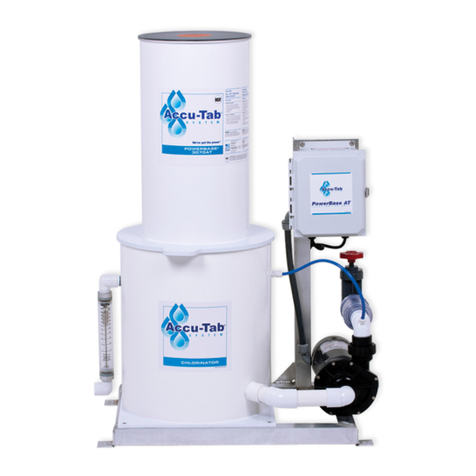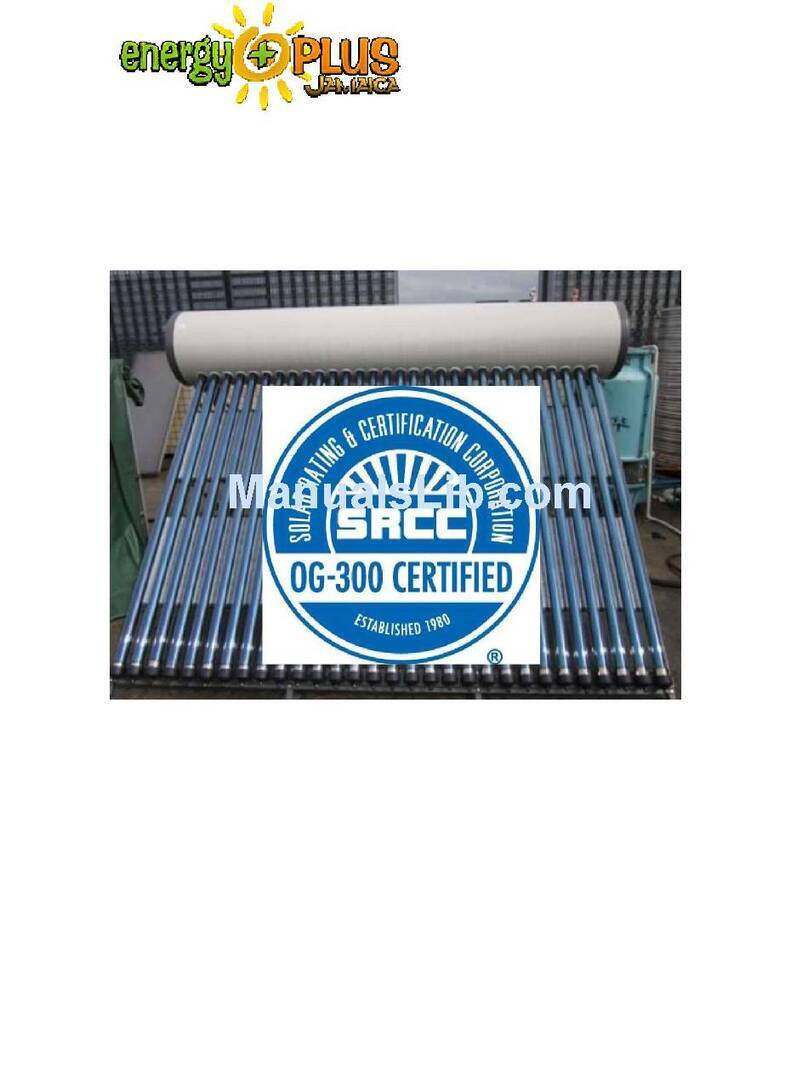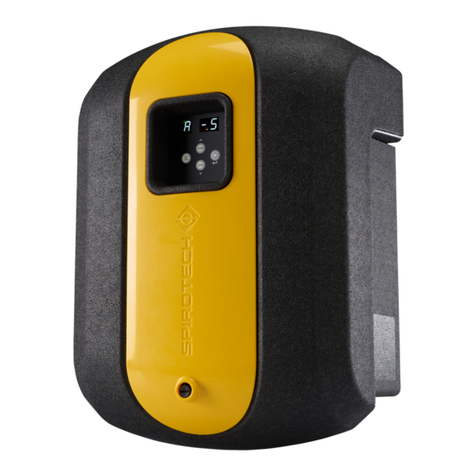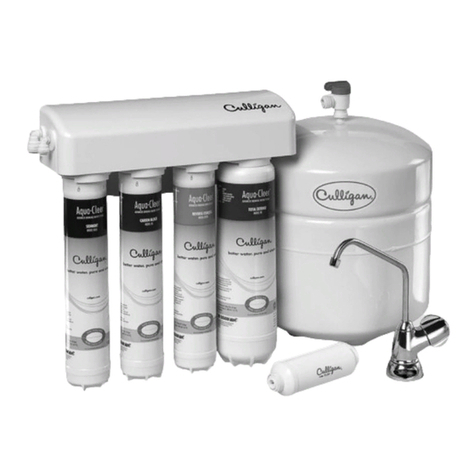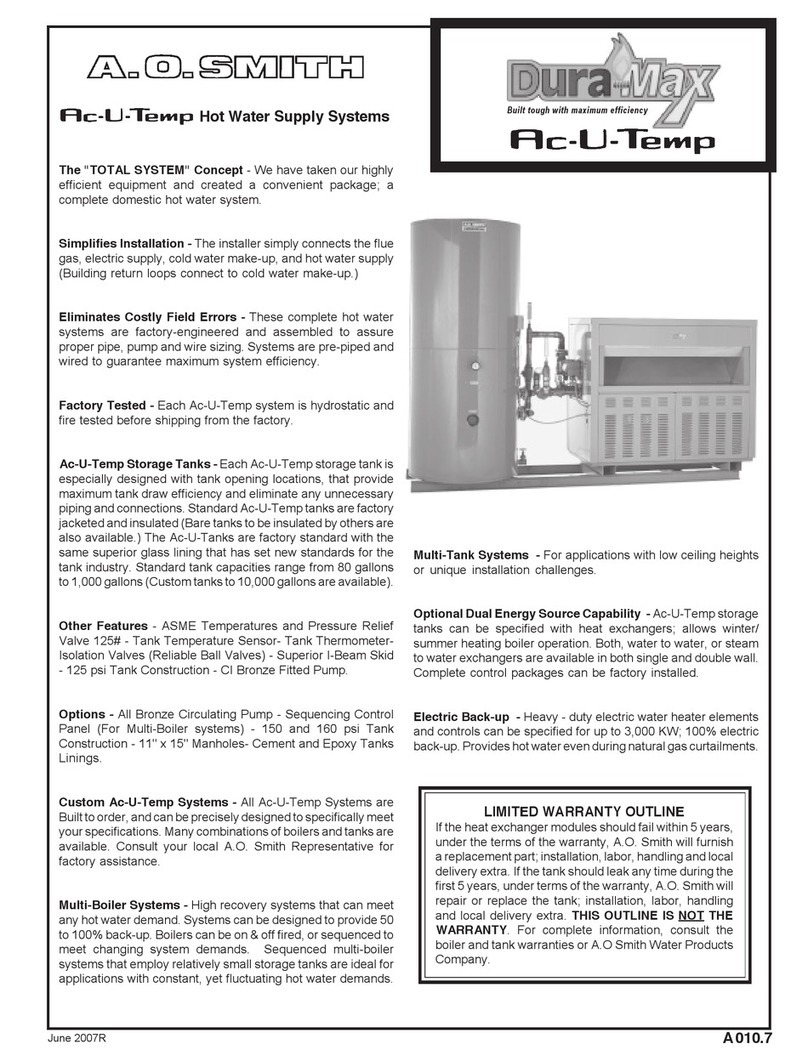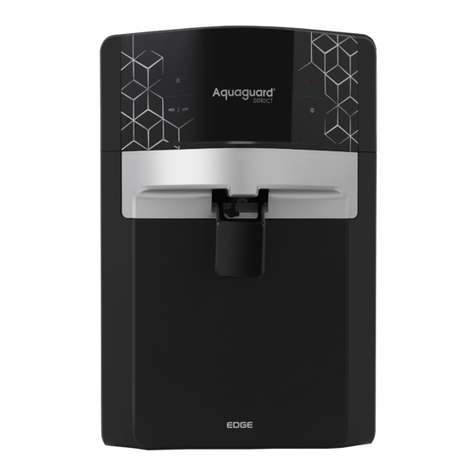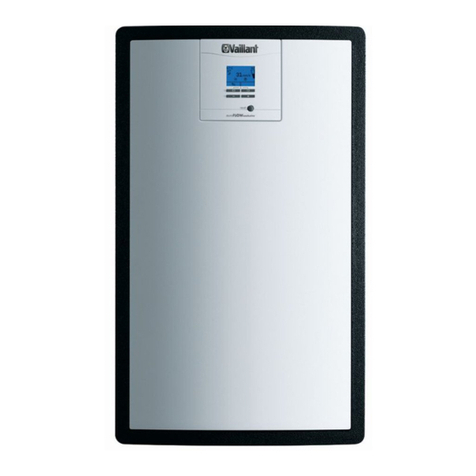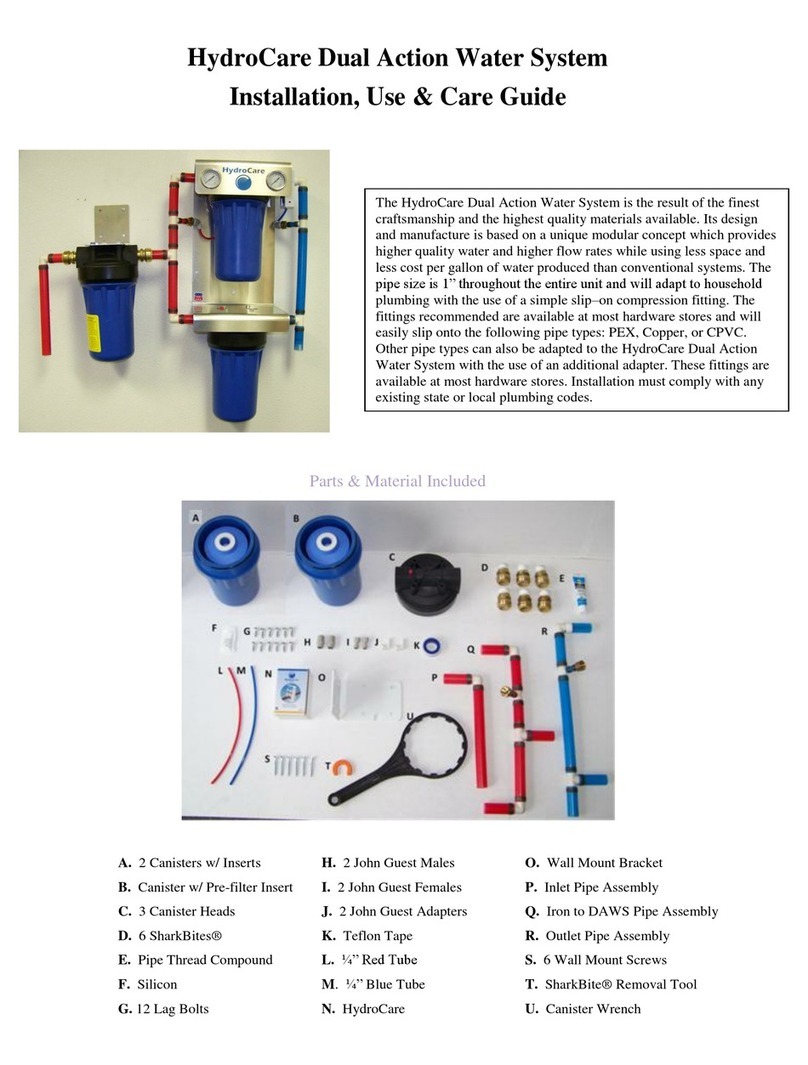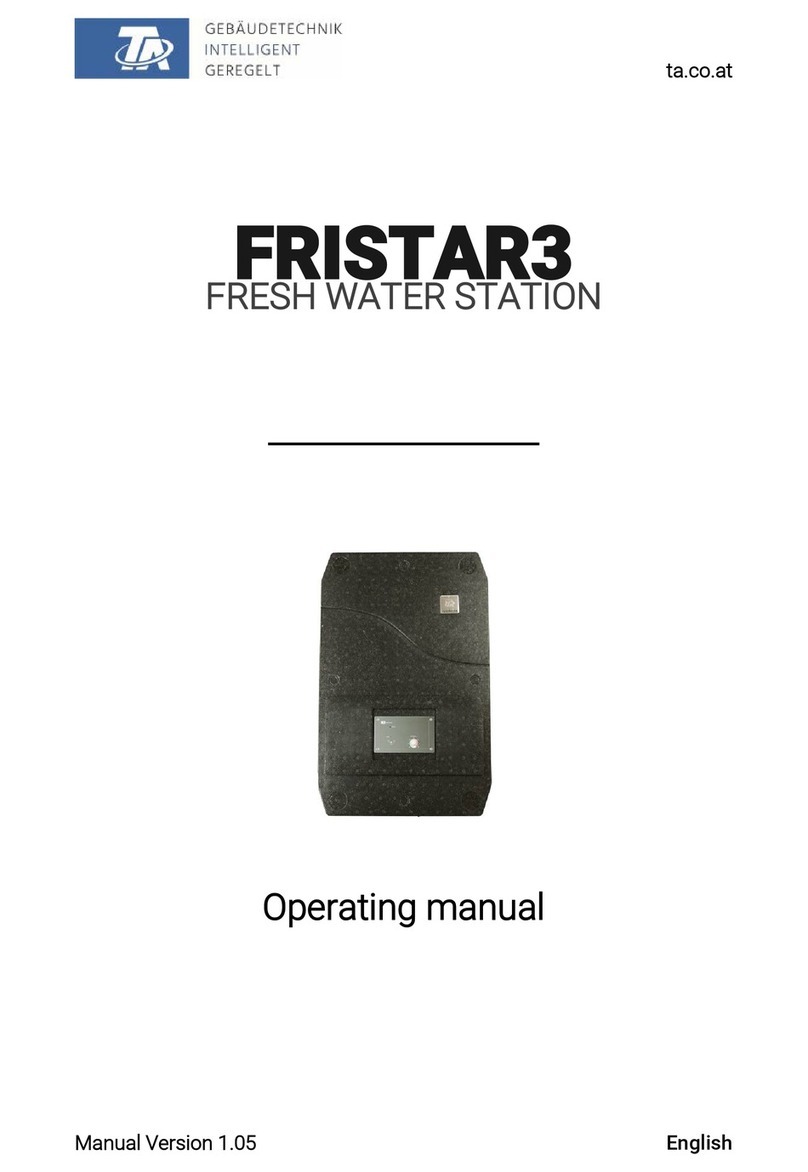
3
ENG
WTS +0300130EN rel. 1.0 - 05.09.2022
GENERAL WARNINGS
FAILURE TO CAREFULLY HEED THE WARNINGS SHOWN IN THIS
MANUAL COULD LEAD TO FIRE OR EXPLOSION AND CONSEQUENT
DAMAGE TO PROPERTY, INJURY OR DEATH.
• Do not store or use petrol or other ammable vapours and liquids
in the vicinity of this or other appliances.
IF YOU SMELL GAS:
1. Do not attempt to switch on any appliance;
2. Do not touch any electrical switches; do not use telephones in
the building;
3. Call the gas supplier immediately from a neighbour’s phone. Fol-
low the instructions given by the gas supplier;
4. If you cannot contact the gas supplier, call the re brigade;
• Installation and maintenance must be performed by a quali-
ed installer, service centre or gas supplier.
CAREL Industries reverse osmosis (RO) systems are advanced products,
whose operation is specied in the technical documentation supplied
with the product or can be downloaded, even prior to purchase, from the
website www.carel.com. Each CAREL product, in relation to its advanced
level of technology, requires setup/conguration/programming to be able
to operate in the best possible way for the specic application. Failure to
complete such operations, which are required/indicated in the user manu-
al, may cause the nal product to malfunction; CAREL accepts no liability in
such cases. The customer (manufacturer, developer or installer of the nal
equipment) accepts all liability and risk relating to the conguration of the
product in order to reach the expected results in relation to the specic
nal installation and/or equipment. CAREL may, based on specic agree-
ments, act as a consultant for the installation/commissioning/use of the
unit, however in no case does it accept liability for the correct operation
of the RO system and the nal installation if the warnings or suggestions
provided in this manual or in other product technical documents are not
heeded. In particular, as well as observing the above warnings and sug-
gestions, the following warnings must be observed for correct use of the
product:
ELECTRIC SHOCK HAZARD: the RO system contains live electrical com-
ponents.Disconnect the mains power supply before accessing inside
parts or during maintenance and installation.
WATER LEAK HAZARD: the RO system automatically and constantly lls/
drains certain quantities of water. Malfunctions in the connections or in
the humidier may cause leaks.
Environmental conditions, fuel and power supply voltage must all com-
ply with the specied values. All other uses and modications made to
the appliance that are not authorised by the manufacturer are considered
incorrect. Liability for injury or damage caused by the incorrect use of the
appliance lies exclusively with the user.
Please note that the appliance contains live electrical devices. All service
and/or maintenance operations must be performed by specialist and
qualied personnel who are aware of the necessary precautions and are
capable of performing the operations correctly and in accordance with
the safety standards and legislation in force, with specic reference to:
1. Italian law no. 46/90: “Safety standards relating to systems in buildings”;
2. Italian Presidential Decree no. 447 of 6 December 1991:“Regulations for
the enforcement of law no. 46, dated March 5, 1990, on safety relating
to systems in buildings”;
3. Italian law no. 10/91: “Regulations for the enforcement of the national
plan for energy savings and the development of renewable sources of
energy”
CAUTION
The installation of the product must include an earth connection, using
the Schuko plug available in the RO system.
Caution:
• Disconnect the appliance from the mains power supply before access-
ing any internal parts.
• Environmental and power supply conditions must conform to the val-
ues specied on the product rating labels.
• The product is designed exclusively to demineralize drinkable water.
• Only qualied personnel who are aware of the necessary precautions
and able to perform the required operations correctly may install, oper-
ate or carry out technical service on the product.
• Only water with the characteristics indicated in this manual must be
used.
• All operations on the product must be carried out according to the
instructions provided in this manual and on the labels applied to the
product. Any uses or modications that are not authorised by the manu-
facturer are considered improper. CAREL declines all liability for any such
unauthorised use.
• Do not attempt to open the appliance in any way other than described
in the manual.
• Observe the standards in force in the place where the RO system is
installed.
• The appliance is not intended for use by persons (including children)
with reduced physical, sensory or mental capabilities, or lack of expe-
rience and knowledge, unless they have been given supervision or in-
struction concerning use of the appliance by a person responsible for
their safety.
• Do not install and use the product near objects that may be damaged
when in contact with water (or condensate). CAREL declines all liability
for direct or indirect damage following water leaks from the humidier.
• Do not use corrosive chemicals, solvents or aggressive detergents to
clean the inside and outside parts of the RO system, unless specically
indicated in the user manual.
• Do not drop, hit or shake the RO system, as the inside parts and the
linings may be irreparably damaged,
CAREL adopts a policy of continual development. Consequently, CAREL
reserves the right to make changes and improvements to any product
described in this document without prior warning. The technical speci-
cations shown in the manual may be changed without prior warning.
The liability of CAREL in relation to its products is specied in the CAREL
general contract conditions, published on the website www.carel.com
and/or by specic agreements with customers; specically, to the extent
where allowed by applicable legislation, in no case will CAREL, its employ-
ees or subsidiaries/aliates be liable for any lost earnings or sales, losses of
data and information, costs of replacement goods or services, damage to
things or people, downtime or any direct, indirect, incidental, actual, puni-
tive, exemplary, special or consequential damage of any kind whatsoever,
whether contractual, extra-contractual or due to negligence, or any other
liabilities deriving from the installation or use of the product, even if CAREL
or its subsidiaries/aliates are warned of the possibility of such damage.
Warnings
